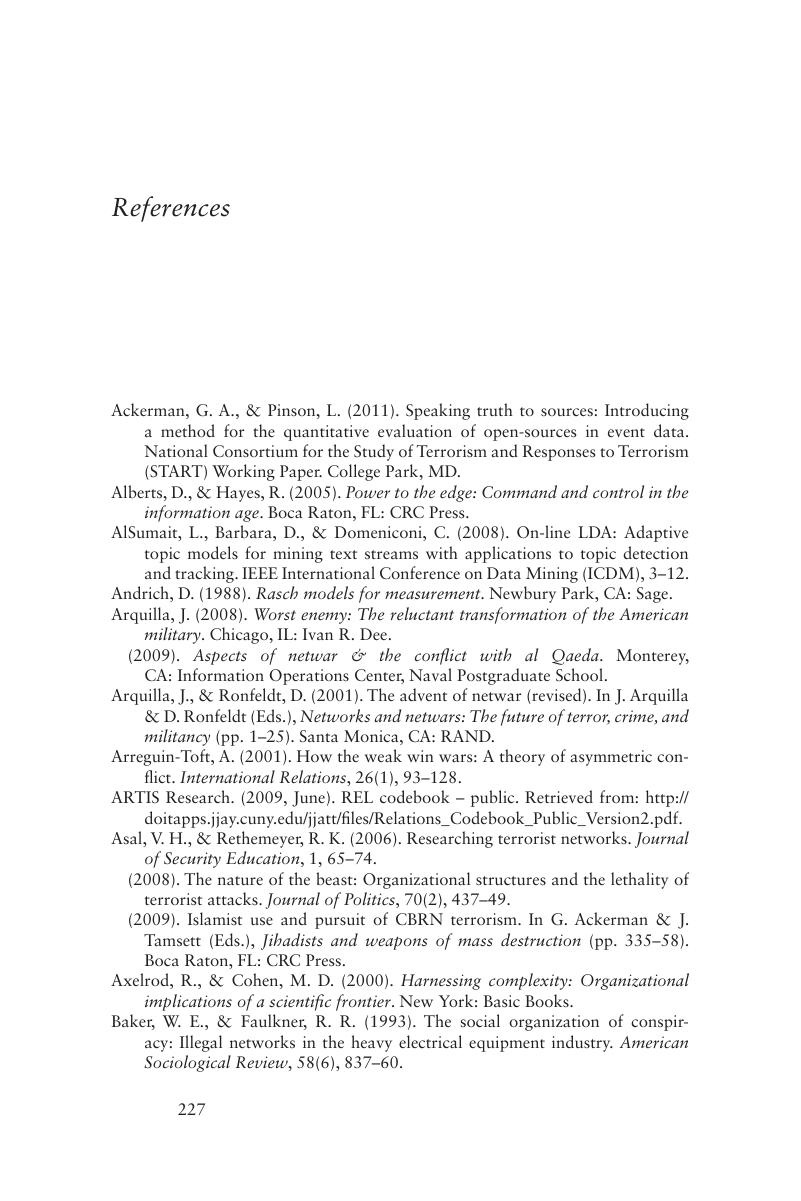Book contents
- Half title page
- Structural Analysis in the Social Sciences
- Title page
- Copyright page
- Contents
- Contents
- Contents
- Contributors
- Introduction
- 1 Covert Network Analysis: An Exchange Network Theory Perspective
- 2 Dark Dimensions
- 3 Disrupting and Dismantling Dark Networks
- 4 The Methodological Challenges of Extracting Dark Networks
- 5 Detecting Dark Networks Using Geo-temporal and Pattern-Based Network Analysis Techniques
- 6 LookingGlass
- 7 Open-Source Exploitation for Understanding Covert Networks
- 8 Simulating and Analyzing Dark Networks
- 9 Criminal Social Network Intelligence Analysis with the GANG Software
- 10 A New Approach for Identification of Multiple Threat Scenarios to Counter CBRN Networks
- 11 Casting More Light on Dark Networks
- 12 Generating Illicit Networks
- 13 Challenges to Understanding Covert Groups
- 14 Dynamic Actor-Oriented Models as a Tool for the Analysis of Dark Networks in a Multiply Connected Actor-Oriented Environment
- Bibliography
- Index
- Series page
- References
Bibliography
Published online by Cambridge University Press: 05 August 2015
- Half title page
- Structural Analysis in the Social Sciences
- Title page
- Copyright page
- Contents
- Contents
- Contents
- Contributors
- Introduction
- 1 Covert Network Analysis: An Exchange Network Theory Perspective
- 2 Dark Dimensions
- 3 Disrupting and Dismantling Dark Networks
- 4 The Methodological Challenges of Extracting Dark Networks
- 5 Detecting Dark Networks Using Geo-temporal and Pattern-Based Network Analysis Techniques
- 6 LookingGlass
- 7 Open-Source Exploitation for Understanding Covert Networks
- 8 Simulating and Analyzing Dark Networks
- 9 Criminal Social Network Intelligence Analysis with the GANG Software
- 10 A New Approach for Identification of Multiple Threat Scenarios to Counter CBRN Networks
- 11 Casting More Light on Dark Networks
- 12 Generating Illicit Networks
- 13 Challenges to Understanding Covert Groups
- 14 Dynamic Actor-Oriented Models as a Tool for the Analysis of Dark Networks in a Multiply Connected Actor-Oriented Environment
- Bibliography
- Index
- Series page
- References
Summary

- Type
- Chapter
- Information
- Illuminating Dark NetworksThe Study of Clandestine Groups and Organizations, pp. 227 - 249Publisher: Cambridge University PressPrint publication year: 2015



